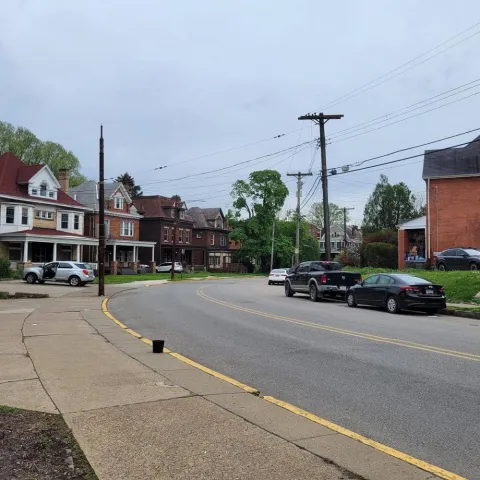Bellevue
The Borough of Bellevue is a Home Rule Charter Community situated along the Ohio River north of Pittsburgh, Allegheny County, Pennsylvania. It has 9,000 residents per square mile and a bustling business district.
The land that became Bellevue was initially part of the Depreciation Lands, set aside for Revolutionary War veterans. James Robinson (1799) and Hugh Henry Brackenridge (1792) were the first documented landowners. When Bellevue officially became a borough in 1867, it had exactly 300 residents—the minimum required for incorporation. Linguist and early resident J.J. East named it "Bellevue," meaning "beautiful view." Following incorporation, Bellevue began transforming into a distinctly suburban, middle-class "bedroom community," with residents commuting to Pittsburgh and Allegheny County.
Before the mid-19th century, people lived close to where they worked. But Civil War-era advances in transportation enabled city workers to settle farther out, avoiding urban congestion and pollution. Railroads and streetcars fueled suburban expansion across Pittsburgh's periphery, drawing wealthier families to Bellevue and similar communities. The Pittsburgh, Fort Wayne & Chicago Railroad extended commuting access in the 1860s and 1870s, prompting land speculation and early development. Bellevue and neighboring West Bellevue (now Avalon) were incorporated in 1867 and 1874, respectively. By 1875, the borough featured a mix of stately older homes and newer subdivisions concentrated along streets like Sheridan and Madison, though much of the northern area remained farmland.
In 1892, streetcar service arrived via the Allegheny and Bellevue Street Railways Company, sparking a surge in real estate. Advertisements promised "pure air," "macadamized streets," and "sand-filtered water" to entice middle-class urbanites seeking healthier living. Developers such as the Allegheny Real Estate Improvement Company and the Bellevue Land Company laid out subdivisions with names like Sunnyside, Kendall Park, and Bellevue Park. Between 1892 and the 1920s, hundreds of Queen Anne, Colonial Revival, and Craftsman homes appeared—hallmarks of early 20th-century suburban comfort and taste. Local families, such as the Roseburgs, Dawsons, and Boles, joined the development boom, selling off land for construction.Bellevue's building boom slowed with the onset of the Great Depression in 1929. Though development continued, the town would never see such explosive growth again. Fortunately, many of the period's homes still stand—lovingly maintained by new generations who continue to value the borough's historic charm and sense of place.

